Category: Adventure
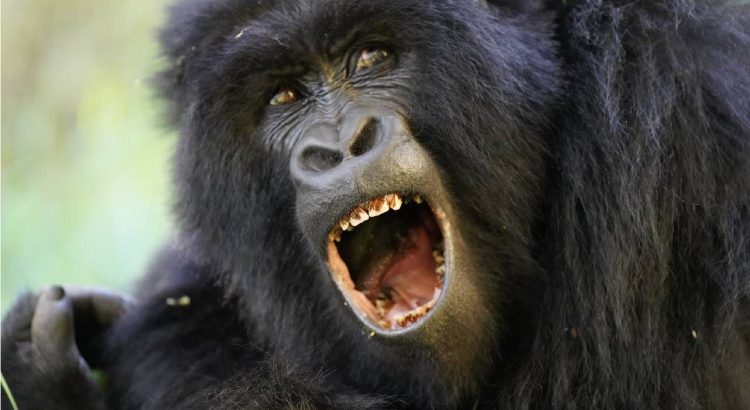
Gorillas in Our Midst
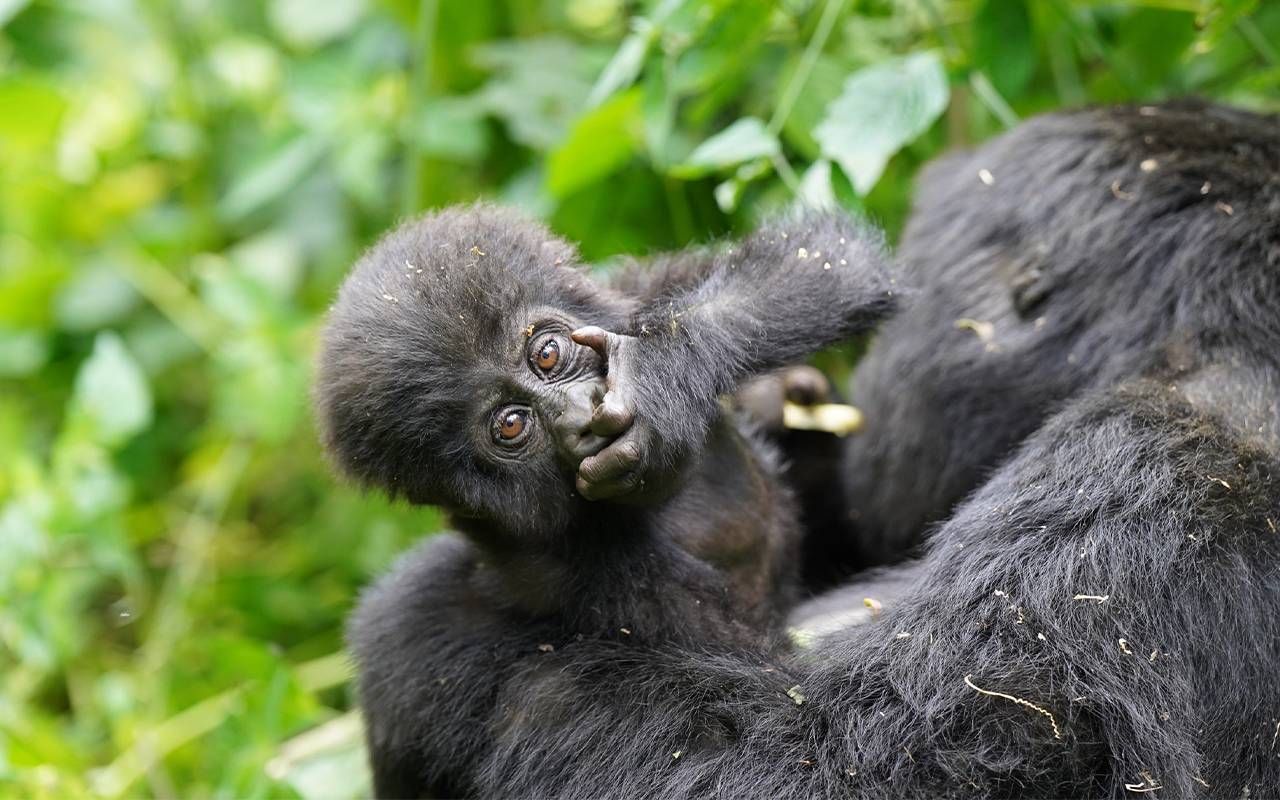
He told her that Ruhondeza, the 48-year old Silverback leader of the first gorilla group to be habituated for tourism, was spotted alone in a community garden outside the forest. Gorillas that stray into villages are susceptible to human diseases and may destroy cultivated crops.
The warden asked if she would oversee the effort to move the older ape back into the park.
Kalema-Zikusoka was more than eager and more than qualified to save the gorilla. She won the 2022 Edinburgh Medal acknowledging her significant contribution to the understanding and well-being of humanity. In 2021, she was selected as a United Nations Champion of the Earth, and since 2017, a National Geographic Explorer.
Veterinarian Superstar
Kalema-Zikusoka and her team rushed to the scene. Carrying darting gear to tranquilize the ape, they hiked across the hilly farmland for 45 minutes until they found him hiding behind a bush, chewing banana leaves.
“He appeared calm, safer in this community of humans than in his forest home.”
“He appeared calm, safer in this community of humans than in his forest home,” Kalema-Zikusoka writes in her memoir, “Walking with Gorillas: The Journey of an African Wildlife Vet.” He had only days left to live in his fragile state, but she feared returning him to the forest would make him easy prey to territorial silverbacks.
Uganda’s most famous eco-hero you may have never heard of, Dr. Gladys, as she is known locally, is to Bwindi what Dian Fossey, Jane Goodall and Biruté Galdikas were to primates in Rwanda, Tanzania and Borneo, respectively.
Her story has attracted more attention as we approach September 24, International Gorilla Day.
She has been featured on numerous wildlife documentaries, such as “Gladys, the African Vet.” I read her memoir last May, before leaving on my third trip to Bwindi to trek for gorillas and explore the cultural scene, shop for crafts, take a traditional dance class and go on nature walks to support the local economy.
Inspired by Goodall and Galdikas
While studying at the Royal Veterinary College, University of London, Kalema-Zikusoka attended lectures by Goodall and Galdikas, later writing that the two women “inspired and encouraged me to follow my dreams.” In the foreword to Kalema-Zikusoka’s book, Goodall noted that both had a childhood passion for animals and supportive mothers. Goodall also honors Kalema-Zikusoka for overcoming personal and professional hurdles to protect endangered species.
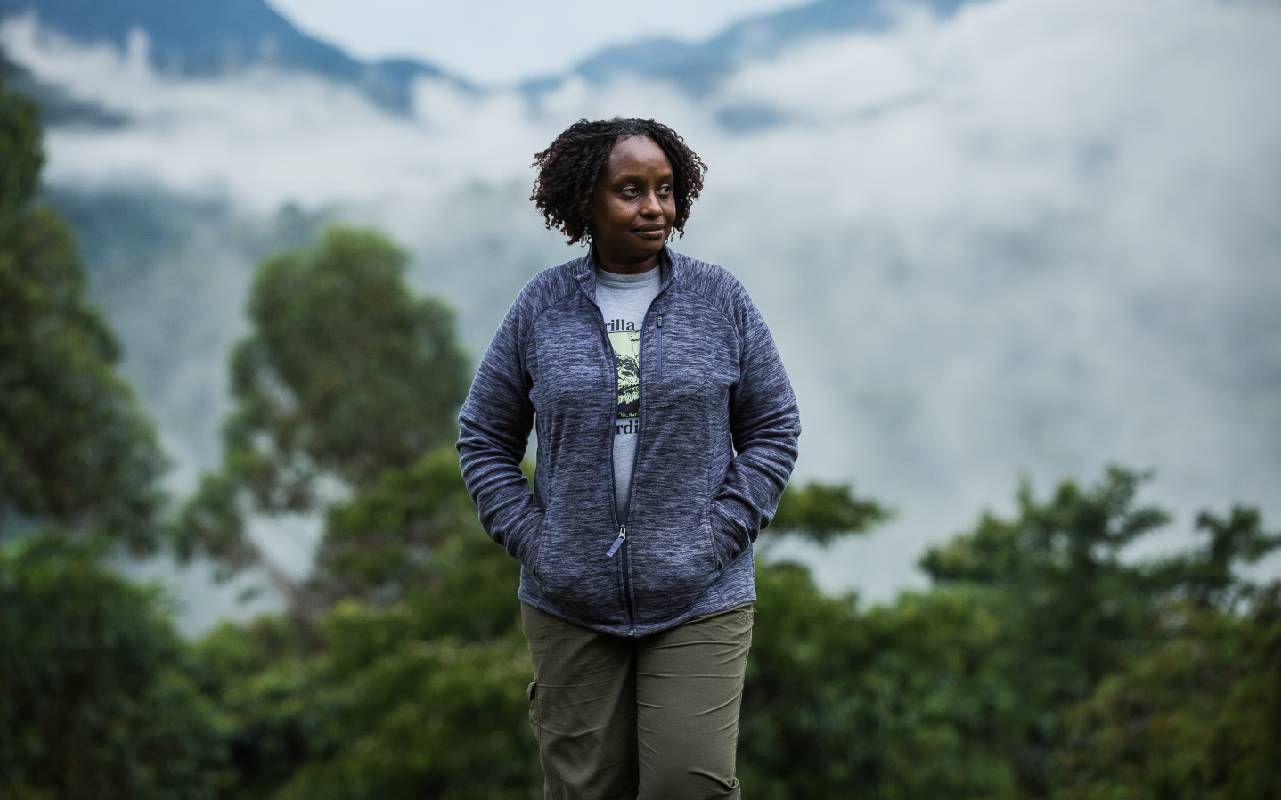
Born in 1970, the youngest of six children, Kalema-Zikusoka grew up during General Idi Amin’s murderous regime. Her family home was filled with pets to try to assuage the grim times.
In 1972, soldiers abducted and killed her father, William Wilberforce Kalema, who had served as a senior cabinet minister in Uganda’s first parliament after the country achieved independence from the British in 1962. “I have always seen my career as a way to continue his legacy, protecting the precious wealth and heritage of Uganda,” she writes.
At 12, she decided to become a vet. While volunteering at the Wildlife Club of Uganda in 1987, a park warden confirmed that mountain gorillas were found to be living in what was then the Bwindi Forest Reserve, a 128-square-mile rainforest about twice the size of Washington, D.C. One of the most biodiverse forests in East Africa, it contains an estimated 324 species of trees, at least 120 species of mammals and 350 documented species of birds.
“You can’t address animal health and the environment without attending to human health.”
Bwindi’s evidence as the world’s second mountain gorilla habitat hastened its designation as a National Park in 1991 and a UNESCO Natural World Heritage Site in 1994.
In 1996, six months into her job setting up a veterinary unit with the Uganda national parks and becoming the first Ugandan wildlife vet, at age 26, Kalema-Zikusoka experienced a breakthrough moment.
While treating a gorilla family infested with scabies from exposure to human sewage and dirty clothing outside the park, she realized, “You can’t address animal health and the environment without attending to human health.”
Indeed, poaching, habitat loss, deforestation and disease had threatened to wipe out the Bwindi mountain gorilla population in the late 1990s. Estimates of their population fell to 300, low enough that the International Union for Conservation of Nature classified the subspecies “critically endangered.”
Kalema-Zikusoka believed a “One Health” approach was necessary to protect the gorillas by improving the health of the local community and environment. To that end, she founded the nonprofit Conservation Through Public Health in September 2003 and appointed her husband, Lawrence, as treasurer. He was a Ugandan telecoms expert she met in graduate school in North Carolina and donated the first $100 to the organization.
On a Zoom call from her home in Entebbe, Uganda, which she shares with Zikusoka and their two teenaged sons, she used the 20th anniversary of the nonprofit to consider its accomplishments and remaining goals.
20 Years of Progress
“At the beginning, everyone thought it was weird,” she recalled, “One Health was a relatively unknown concept when I started advocating for, and implementing, an integrated approach to conservation and health.” Donors at the time focused on either conservation or health. Not both.
Their skepticism ignited her determination. She allied herself to the residents living alongside the park, introducing Village Health and Conservation Teams to administer public health and counsel households on sanitation and hygiene.
She formed the group, Human and Gorilla Conflict Volunteers, affectionately referred to as HUGOs, to herd stray gorilla groups back into the parks. She initiated a treatment program against tuberculosis and established a community based-family planning program that encourages population management.
When Kalema-Zikusoka and her team tracked down Ruhondeza, the mischievous gorilla, and concluded he was too frail to return to the forest, she took her concerns to the Village Health and Conservation Team. She reminded the team that the silverback’s gentle nature helped his gorilla group, the Mubare, to be the first to habituate to the presence of humans in Bwindi, launching gorilla tourism there in 1993.
A Hero’s Funeral
Thanks to him, their lives and futures had improved. When their own elders grew old, didn’t they take care of them? They agreed to allow the declining ape live out his remaining days in their fields. When he died, more than 100 community members gave him a hero’s funeral.
“The kindness and willingness to tolerate Ruhondeza, signified the extent to which conservation efforts had improved in Bwindi,” Kalema-Zikusoka wrote. “Genuine friendship between people and wild animals was indeed possible.”
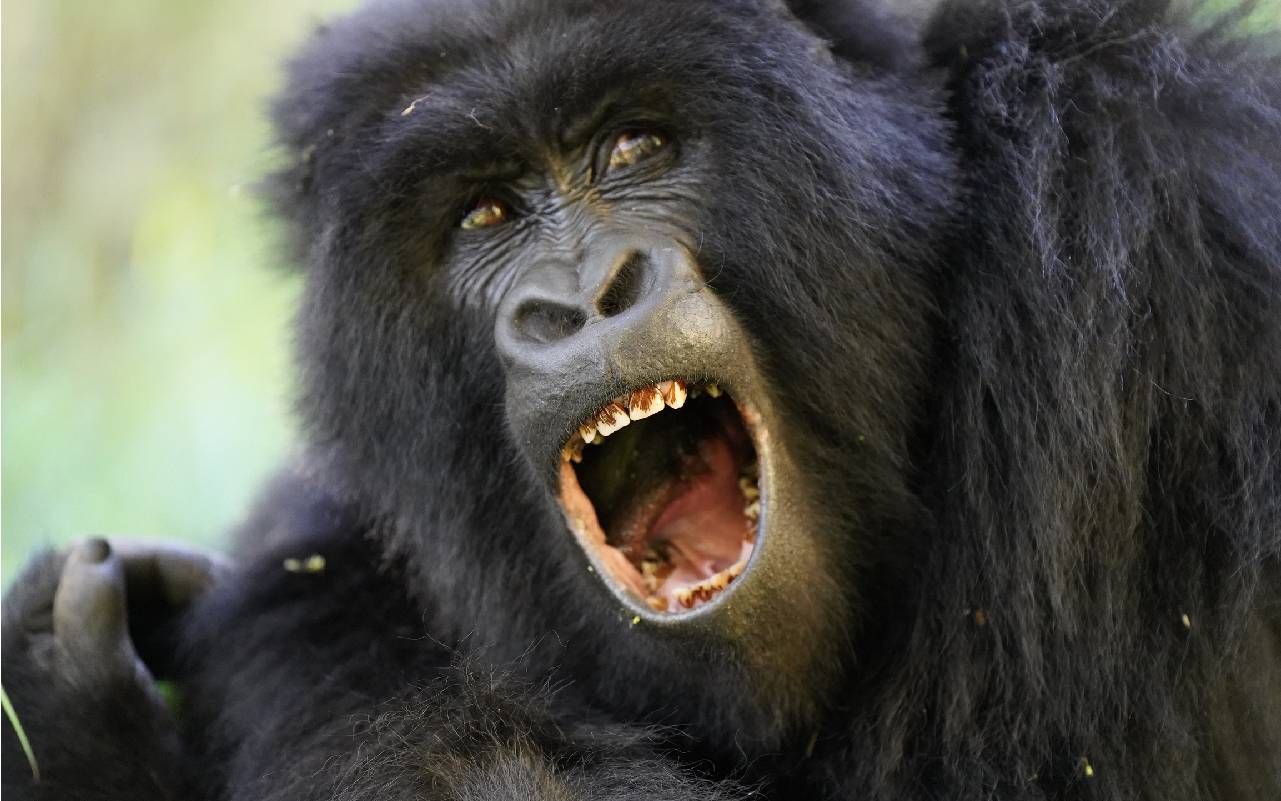
I trekked the legendary Mubare group in January 2020. After Ruhondeza’s death, his 17-year-old silverback son, Kanyonyi, who Kalema-Zikusoka had known since he was a baby in her early years as a vet, resumed the leadership of the family. He cut a charismatic figure and was known to “deliberately set out to frighten tourists to see their reaction — his idea of humor,” she said.
A New Leader for the Clan
Just five years into his role, Kanyonyi developed an infection after falling off a tree. While being treated with antibiotics, he got into a fight with a competing silverback and died from his wounds in 2017.
Maraya took control of the group and remains their silverback leader today. The stories behind these gorilla groups become narratives, as compelling as human family histories.
COVID-19 closed the park closed for six months in 2020 — a serious blow to Uganda. Tourism and travel account for 7.7% of the country’s economy and more than 60% of the budget of the Ugandan Wildlife Authority, which helps conserve other, less-visited parks, Kalema-Zikusoka said. Travel and tourism employ about 700,000 jobs in Uganda, which has a work force of 18 million.
Poaching Rose as Tourism Fell
“Poaching bush pigs and duikers, a small antelope, for subsistence increased drastically when tourism disappeared,” Kalema-Zikusoka said. Without the daily activities of tourism, hunters felt comfortable entering the park and setting traps, which can maim and kill gorillas. In June, a poacher startled the leader of a gorilla group, causing it to roar in his family’s defense. The illegal hunter lunged at the silverback with a spear, killing it.
Greater security and protective safeguards were implemented for the gorillas. “My team never rested,” recalled the vet. Considered essential workers, they trained rangers, gorilla guardians and village health and conservation teams on mask wearing, social distancing and detecting COVID in gorillas.
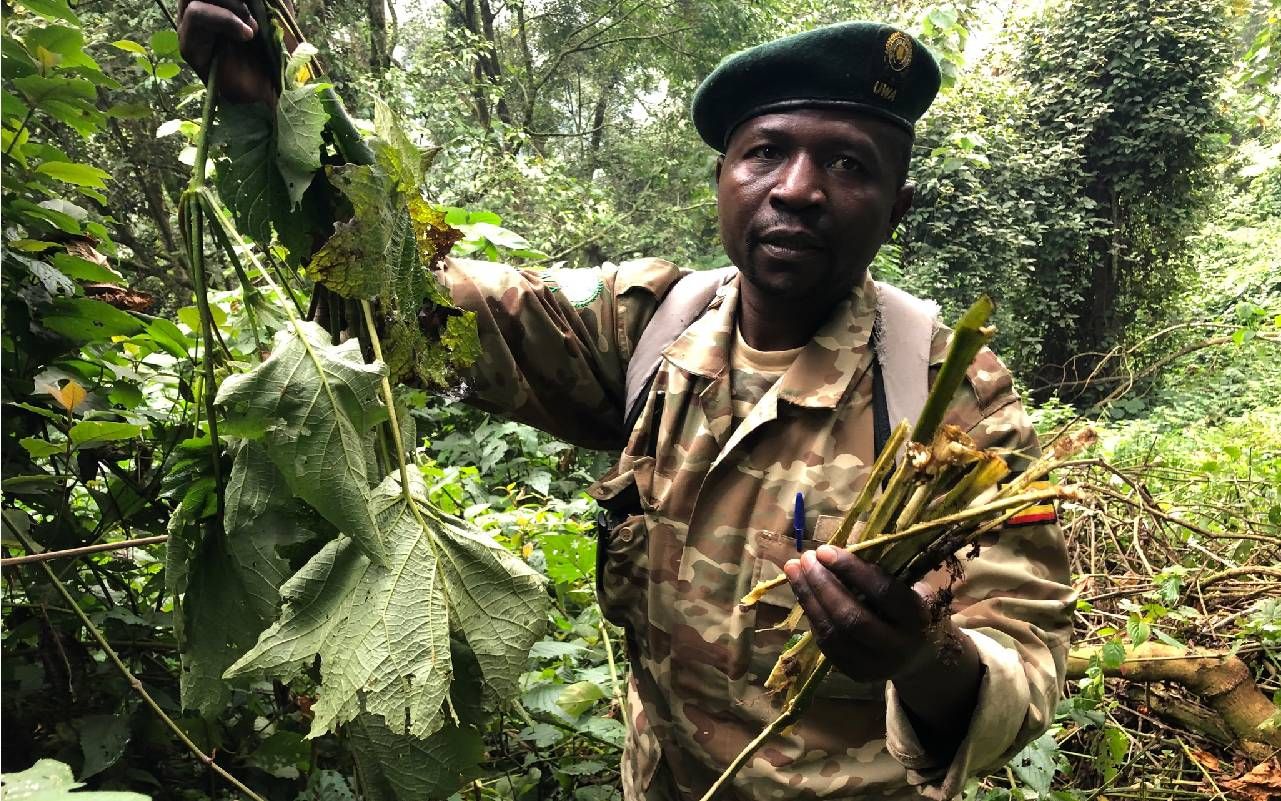
They tested the park’s staff and analyzed gorillas’ feces. “I told my team when the pandemic ends, we’re all going to take a month off,” Kalema-Zikusoka said. “It’s never really ended.”
Sgt. Head Guide Augustine Muhangi led my “habituation experience,” where guests spend four hours observing a gorilla group that is undergoing the two-year process of adjusting to the presence of humans. He is 45 years old, grew up in Higabiro Village next to the park and has worked for the Uganda Wildlife Authority for 20 years.
Benefits of Tourism
He still lives in Higabiro Village with his wife, a schoolteacher, and their three children. “Gorilla tourism has improved my village,” he said by email, listing improvements in education, infrastructure and health care. During COVID, he wrote, “gorilla monitoring and protection intensified, and we worked day and night to ensure 100% protection of the mountain gorillas from poachers and COVID-19.” There is no evidence that any of Bwindi’s mountain gorillas caught the virus.
“Gorilla tourism has improved my village.”
COVID-19 revealed the Bwindi community’s dependency on tourism. “We discovered we needed other ways to support the people living next to the park,” Kalema-Zikusoka explained. She wasted no time. Conservation Through Public Health ‘s Ready to Grow Gardens program supplied low-maintenance seedlings, harvestable within one to four months, to over 1,500 food-insecure households, prioritizing residents most likely to turn to poaching out of desperation.
In 2015, Kalema-Zikusoka had created a global, for-profit company, called “Gorilla Conservation Coffee” in response to the low prices farmers received for their beans. The award-winning enterprise pays a premium price to over 500 coffee growers, 120 of whom are women who live next to the national park. Enterprises such as this can help sustain the Bwindi community during low tourist turnouts, she believes.
The Face of Conservation Coffee
A portion of coffee sales go toward saving mountain gorillas. The image of Kanyonyi, the Mubare gorilla family’s lead silverback , remains on the brand, though he died in 2017. Kalema-Zikusoka explains: “His individual story helps tell the larger story about how helping communities that share a habitat with critically endangered gorillas can prevent them from becoming extinct.”
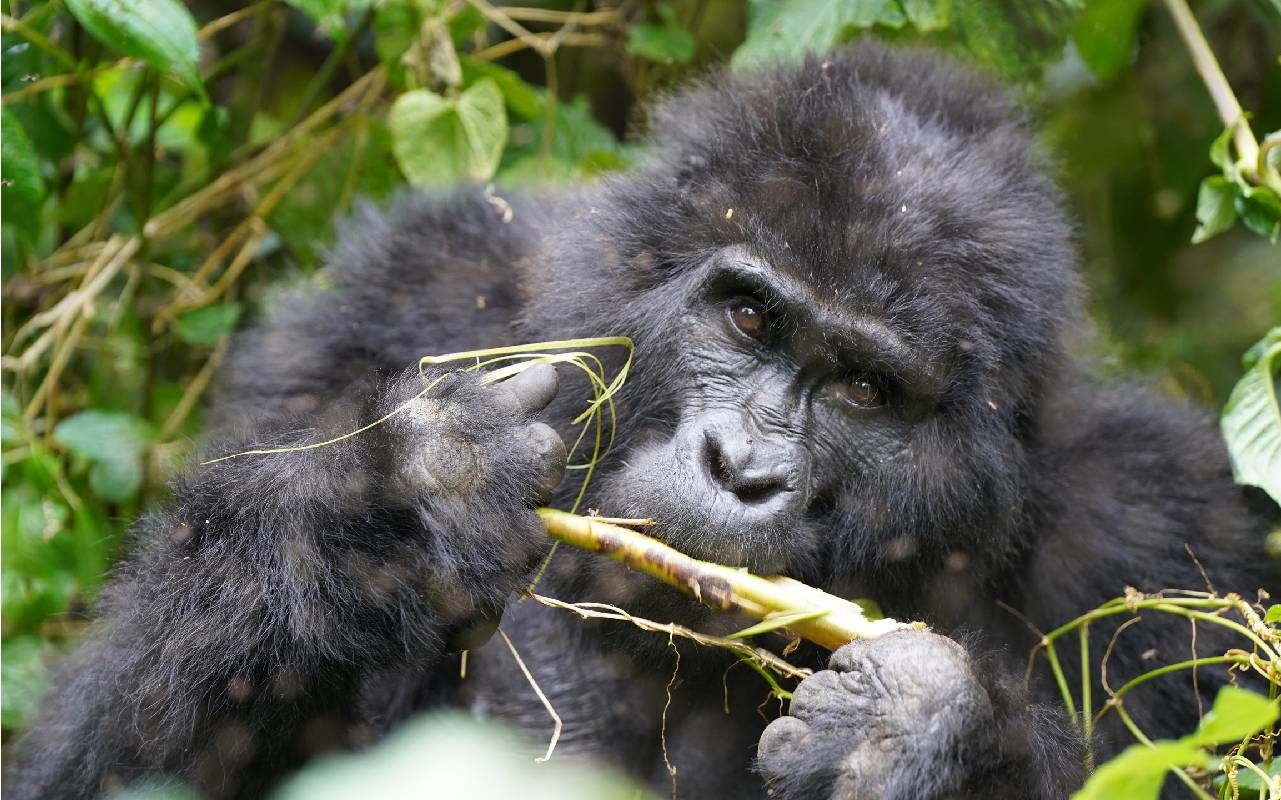
The last census, in 2018, revealed a rise to about 459 mountain gorillas in Bwindi; adding 604 in the Virunga National Park brings the total to 1,063. That year, the IUCN reclassified the mountain gorilla to “endangered,” making it the only gorilla sub-species whose population is growing. Kalema-Zikusoka estimates today’s Bwindi count at about 500, with 24 habituated groups.
“I’m very excited that since I first started working, the numbers have almost doubled,” she said.
And so it seems certain, that walking with gorillas and caring for them is key to helping the people who live alongside them.
Giannella M. Garrett is a writer/photographer who lives in New York City and writes about travel, dance and culture. Her stories have been published in National Geographic, the Washington Post and Conde Nast Traveler.
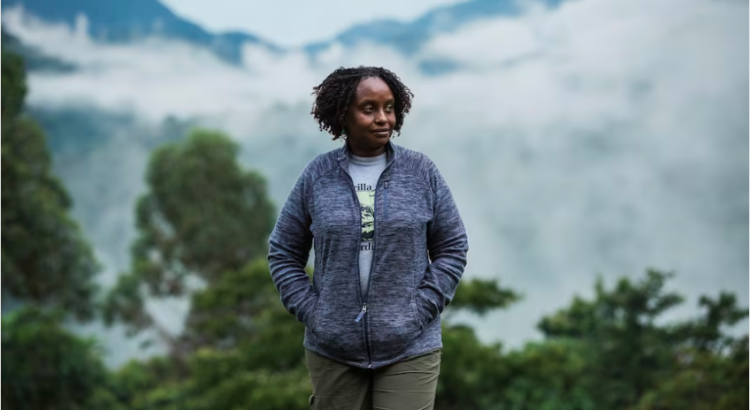
How Uganda’s First Wildlife vet Gladys Kalema-Zikusoka is Saving Endangered Gorillas
Source: ABC RN / By Nick Baker and Jessie Kay for Saturday Extra | August 8th, 2023

When Idi Amin launched a coup and took power of Uganda in 1971, Gladys Kalema-Zikusoka’s father was among the first victims of the brutal dictatorship that followed.
“[My father] was a senior cabinet minister in the previous government … [so] he was abducted and killed,” she tells ABC RN’s Saturday Extra.
Dr Kalema-Zikusoka was two years old at the time, and she grew up wanting to follow in her father’s footsteps — by devoting her life to helping the country develop and thrive.
On a high school visit to Uganda’s Queen Elizabeth National Park, it became clear how she could do it.
The park had very little wildlife, as much of it had disappeared over Idi Amin’s eight years in power.
During that time, both poaching and the ivory trade were encouraged, with the dictator himself hunting animals in the country’s national parks.
“I thought, ‘Why don’t I become a vet who can bring Uganda’s wildlife back to its former glory’,” Dr Kalema-Zikusoka says.
Changing the attitude to conservation
After high school, Dr Kalema-Zikusoka won a scholarship to study at the University of London Royal Veterinary College.
When she returned to Uganda, she convinced the government to appoint her as the country’s first wildlife veterinarian.
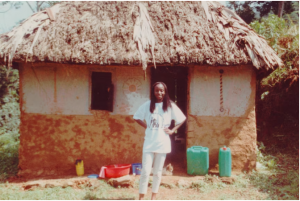
“[But] the attitude towards conservation back then was that animals shouldn’t be touched. They should just be left to natural selection,” she says.
“People looked at me rather strangely when I said we have to treat [injured or sick] animals.”
A key focus for Dr Kalema-Zikusoka was the mountain gorillas of Bwindi Impenetrable National Park, which represent around half of the world’s population of these great apes.
At the time, they numbered just 300 in the park.
And their biggest problem — by far — was humans.
When humans and animals interact
For the Bwindi gorillas, there is a litany of threats from humans.
Habitat destruction and poachers are among these, but what’s less recognised is the health impact of having humans living in very close proximity.
Dr Kalema-Zikusoka says humans and gorillas are “always mixing” as there are communities located right on the edge of the park.
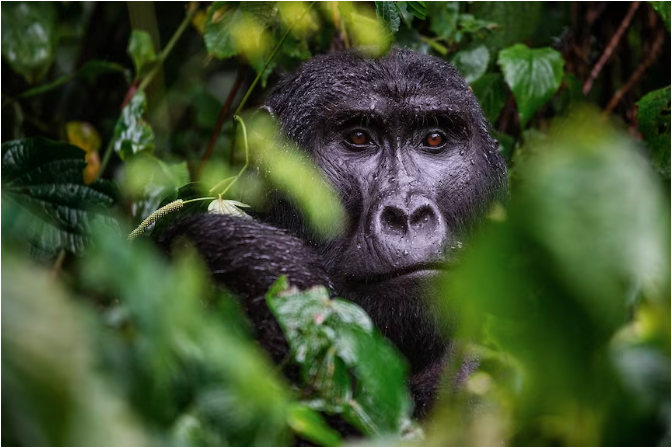
And just as humans can pass on illness to other humans, they can also pass on illness to gorillas.
“We share over 98 per cent of our genetic material [with the gorillas] … We’re closely related and we can easily make each other sick,” she says.
An unusual case of scabies
One of the first jobs that Dr Kalema-Zikusoka undertook as government vet was looking into a skin condition affecting the Bwindi gorillas.
The gorillas had rashes and were insatiably itchy — symptoms similar to scabies.
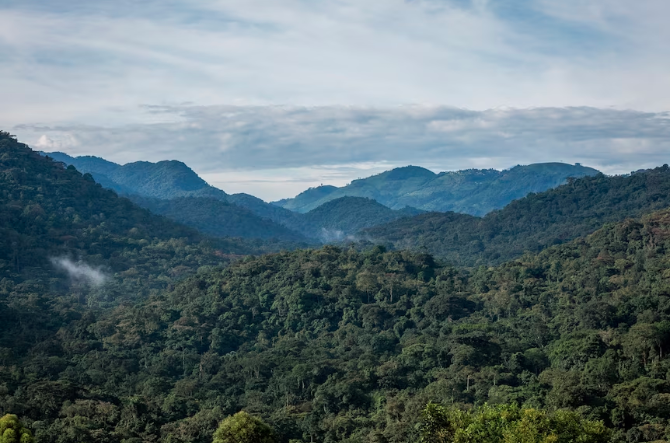
Dr Kalema-Zikusoka says there are occasional scabies outbreaks in some less-developed communities in Uganda.
“This gorilla group was spending a lot of time outside the park. So they probably came across dirty clothing … and that’s how they got it.”
Dr Kalema-Zikusoka was able to treat the gorillas with medicine, but one baby gorilla died from the skin condition.
Living side by side
The scabies case, particularly the baby gorilla’s death, was “a big eye-opener” for Dr Kalema-Zikusoka.
“I realised you couldn’t really keep the gorillas healthy without improving the health of their human neighbours.”
But at the time, healthcare options in the communities around the park were dismal.
“[People near the park] had very limited access to good healthcare … the nearest health centre was around 20 miles [32km] away,” she says.
“If someone fell sick, they had to carry them on a stretcher to the health centre.”
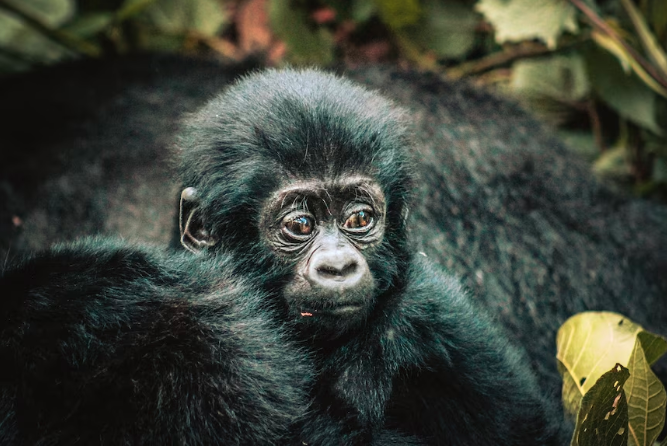
So in 2003, she co-founded a non-profit organisation called Conservation Through Public Health, which focuses on the interdependence of human health and that of wildlife, specifically gorillas.
Her approach to conservation is known as “One Health”, which is about “addressing things holistically”.
As part of the work, “teams spread good health and hygiene [messages] and good conservation attitudes and practices”, Dr Kalema-Zikusoka says.
She says the approach is working.
After a few years of the holistic conservation practice, human and animal health outcomes changed.
“We found that as people were falling sick less often, gorillas were falling sick less often,” she says.

A 2018 count found that the Bwindi gorilla population had increased by more than 150 — to 459 in total — which moved them from “critically endangered” to “endangered”.
For her work, Dr Kalema-Zikusoka has received praise from the likes of conservation royalty Jane Goodall, who she first crossed paths with in 1993.
Dr Goodall supplied the foreword to Dr Kalema-Zikusoka’s new memoir, Walking with Gorillas: The Journey of an African Wildlife Vet.
“She has made a huge difference to conservation in Uganda, and she is an inspiring example,” Dr Goodall writes.
COVID-19 and gorillas
Gorilla tourism has been part of Uganda for three decades — and it’s brought dollars and development to communities near the park.
Dr Kalema-Zikusoka wants outsiders to come and safely meet the great apes, but it’s not without risk.
“Tourists can bring a fatal flu,” Dr Kalema-Zikusoka says.
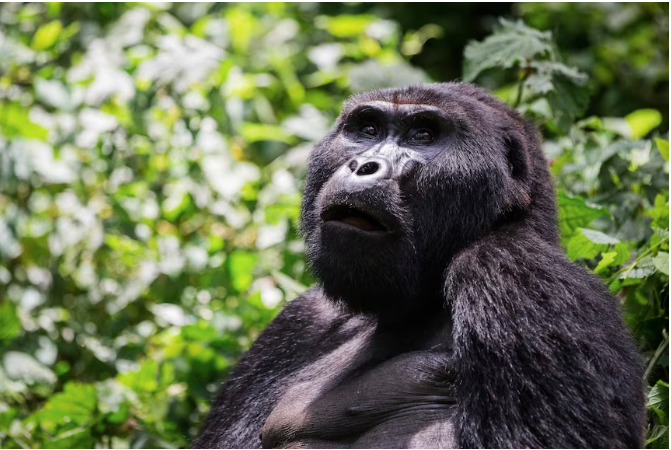
Researchers have documented cases where humans have passed on respiratory viruses to gorillas, and while these are often mild, they are sometimes deadly.
So when COVID-19 hit, Dr Kalema-Zikusoka and her team swung into action to further protect the gorillas.
Elsewhere in the world, at San Diego Zoo Safari Park and Prague Zoo a number of gorillas tested positive for COVID-19 after catching the virus from humans.
“During the pandemic, we advocated to the government that everybody should wear masks when they come close to the gorillas, whether it’s the park staff or the tourists or the local community members,” Dr Kalema-Zikusoka says.
“And that really worked. The gorillas did not pick up COVID from people.”
She says the pandemic has made even more people understand the connection between animal and human health, and that “diseases can jump back and forth” between the two.
And while there is still work to be done to improve human and animal health in Uganda, Dr Kalema-Zikusoka says the attitude towards the country’s wildlife — especially the gorillas — has changed.
“The communities really see gorillas as their future,” she says.
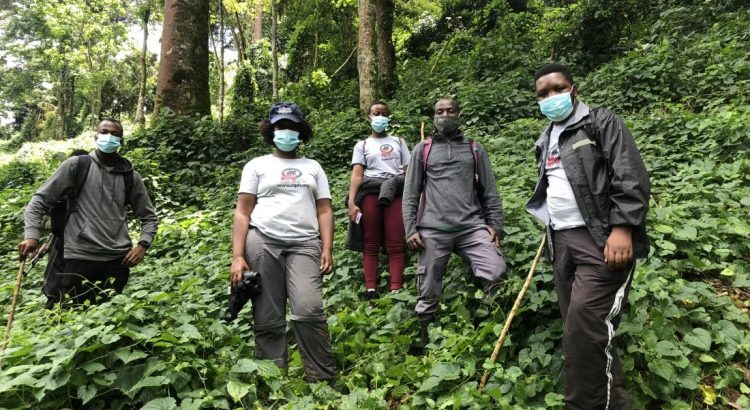
How gorilla tourism became a conservation success story

Published at August 18, 2023 by Catherine Marshall
Source:The Age
Somewhere high above me, the mountains are touching the sun. They sweep heavenwards like mighty barricades, their flanks cloaked in a tangle of forest, their peaks concealed in a pall of cloud.
“We expect the baptism every time,” warns guide Amos Nduhukire.
But this forest’s density is self-evident; enmeshed vegetation will surely shield us from the deluge as we penetrate its understory. Ahead of us lies a path swaddled in vines, spongy with accumulated rainfall. We must step carefully lest we slip, we must duck and swerve to avoid the forest’s probing tentacles.

A sound emanates from deep within: a pulsating wheeze, a baritone groan. It erases the symphony of insectile clamour and gentle birdsong. Nduhukire pauses. The sound comes again. He plunges into the undergrowth, beckoning me to follow. As we pass through a clearing, I realise the baptism he warned of was overstated: the clouds are rising slowly, like a bride’s veil; revealed beneath them are slopes damp with morning vapour. But a religious encounter of sorts awaits, for our trackers have located the source of those reverberations: a family of endangered mountain gorillas secreted deep within the foliage.
It’s 30 years since the first gorilla tourist arrived in Bwindi Impenetrable Forest, a World Heritage Site wedged into the Albertine Rift in the country’s south-western corner. Nearly half the world’s 1063 remaining mountain gorillas live here; the rest range between Uganda’s Mgahinga Gorilla National Park, two hours’ drive south, and neighbouring Rwanda and the Democratic Republic of Congo. Driven largely by this flagship species, tourism accounted for nearly eight per cent of Uganda’s GDP prior to the pandemic. The socio-economic benefits of gorilla tourism cannot be overstated.
“Making 30 years has been a very interesting journey,” says Lilly Ajarova, long-time conservationist and chief executive of the Uganda Tourism Board. “Tourism has changed everything, especially for the people living around the national parks… Fifty-eight per cent of those employed in tourism are women, which gives a good opportunity for gender equality.”
But there’s an elephant in the gorilla-scented room: equality isn’t guaranteed for Ugandans – or tourists. Recently, President Yoweri Museveni signed into law an act that criminalises same-sex relationships; prison sentences and the death penalty are potential consequences. While some groups are calling for a tourism boycott, others argue such action would punish the communities and wildlife whose welfare depends on foreign visitors.
Museveni’s decree comes hot on the heels of another scourge, COVID-19. Not only did tourism cease during the pandemic, gorillas – which are highly susceptible to human-borne disease – faced potential extermination. This danger was exemplified at San Diego Zoo Safari Park, where captive gorillas caught COVID-19 (they recovered with onsite care).

Fortunately, such calamity was avoided in Uganda; the rangers who monitor habituated gorillas received priority vaccinations and were equipped with masks and sanitiser. Though long mandated in the Republic of Congo (home to critically endangered western lowland gorillas), a Ugandan tourist mask directive was finally catalysed by the pandemic. For the preceding decade, such action had been urged by the country’s first wildlife vet and founder of Conservation Through Public Health (CTPH), Dr Gladys Kalema-Zikusoka.
“There was a tug of war about mask wearing,” she says. “Uganda and Rwanda were competing for tourists. [People] were concerned – ‘What if tourists don’t want to come, because we’re making them wear masks?’ COVID forced the issue.”
During the pandemic, Kalema-Zikusoka’s team built on a foundation laid decades earlier after a baby gorilla died during a scabies outbreak. The incident underscored the intractable link between gorilla and community welfare; CTPH was founded as a response to these twin issues. Today, the program includes COVID-19 prevention measures, family planning advocacy, educational programs and a coffee-growing project for farmers living on Bwindi’s periphery; visitors can order the fair-trade brew at Kalema-Zikusoka’s Gorilla Conservation Cafe in Entebbe, or meet farmers during one of her coffee safaris. Such community uplift has helped reduce human-wildlife conflict. By addressing socio-economic problems, she says, gorillas can thrive.
“Uganda and Rwanda are the two countries in the world that have a lot of gorilla tourism and where gorilla tourism is contributing significantly to the national economy. It’s running all the other parks that don’t have enough tourists to meet operational costs. Gorillas, they’re like the lifesaver.”

But they’re not the only primates with such lifesaving potential: endangered chimpanzees also inhabit Bwindi, and while the park’s jagged terrain makes them difficult to track, conditions are wholly amenable in Kibale National Park, five hours’ drive north. This is where my own wildlife encounter starts, after a journey by road from Kampala across grasslands sporadically dotted with villages, over hills glossy with tea plantations and into the folds of the tropical forests where Kibale’s chimps live. They’ve left calling cards: shredded seed pods and leaves strewn across the forest floor.
“Good news,” says guide Alex Turyatunga. “The chimps are moving here. They are asking, ‘Where are you?’ Their telephone is now on.”
It’s the red colobus monkey’s call that rattles the rubber trees and echoes through the forest in a haunting melody. Vines hiss and sigh; birdsong glances off the canopy. It’s easy to slip unseen into this fecund underworld, to lay a snare and feed one’s family with the bush pig or duiker caught in it. But chimps are often the unintended victims of this outlawed practice.
“People were redundant [during the pandemic], and most of them would sneak into the forest and put in traps, and as chimps move on they get trapped. We have a vet doctor, and they come and dart the chimp and remove the snare. That’s one of the biggest challenges,” Turyatunga says. “Two, we’ve got a challenge of chimps moving outside of the forest. The whole of this park is surrounded by communities, so chimps have the habit of going outside to look for sweet things – sugar cane is the number one. You expect them to visit you if you have a garden. Then if you have beehives they also go for honey. People may spear and kill them.”
Tourism is a vital resolution; it provides employment for people like Turyatunga along with explicit revenue-sharing schemes.
“Twenty per cent of annual collections go back to the communities neighbouring the park, such as they become stakeholders in conservation,” he says. “I’m born around [here], so I’ve got a job here, my livelihood is here. Any chimp out there, they say ‘Alex, your chimps are here’. But they don’t know they’re all our chimps.”
And their call, when it comes, is all-encompassing. The stillness is ruptured by a blood-curdling shriek as a juvenile chimp torpedoes through the leafy awning. Angered at his diminished hierarchical status, he sinks his sabre-teeth into the fruit of the aptly-named “testicle tree”. Nearby, the alpha male regards me with a look of distinct familiarity. It’s another baptism of sorts, an encounter with our closest living relatives (along with bonobos).
Emerging from the forest, I’m comforted by the altogether gentler demeanour of the youngsters sharpening their hospitality skills at Cafe Kibale, near the trekking entrance. They brew coffee grown on nearby slopes, prepare tasty Ugandan fare and, in quiet periods, take modules on wildlife studies and conservation.
The cafe was founded last year by Great Lakes Safaris Foundation in an effort to address high unemployment and share tourism’s burgeoning potential with local communities. Its founder, Amos Wekesa, knows well the power of education: born during Idi Amin’s dictatorial reign in the 1970s, he was given an opportunity to attend school after the Salvation Army visited his parents’ village in eastern Uganda. He later studied tourism and worked in the industry as a cleaner, messenger and tour guide while saving up enough money –$US200 – to start Great Lakes Safaris in an “under-the-staircase” office in 2002.
“I first went to track gorillas in 1999. It was tough, accommodation was rough, the quality of guides was not as good as they are today,” he recalls. “The roads, of course, some parts are still rough, but it’s much better today than they were at the time. A lot has improved.”
Wekesa has enlarged that potential; today, his Uganda Lodges portfolio includes properties in three of the country’s national parks – including Primate Lodge, the only accommodation located within Kibale’s boundaries. Graduates of his training program will fill the employment gap here and at other Ugandan tourism ventures.
“The first graduation [in June 2022] was so good, they shocked me. It shows that anybody can be anything. Their parents were like, ‘Ah, no, there’s no hope for my kids’. And of course we’d just come out of COVID. It’s expensive, but it’s value I’m giving back. The idea is, everywhere we have a lodge, we’re going to do the same. If we’re able to train 200 people every year we’ll be very happy,” he says.
“You know, Uganda was the top tourism destination in Eastern Central Africa until [Amin’s coup in] 1971. It can go back to its old glory.”
That glory is distilled days later as I track those gorillas in Bwindi.
“We can do our last preparation right now,” Nduhukire says. “Let’s make sure we have no flash in our cameras. Once you’re done with a sip of water you can put on your mask, and we’ll go straight to the gorillas.”
We approach in supplication these tender creatures whose future lies entirely within human hands. Haloed in greenery, a silverback lifts a frond to his bearded maw. Above us, a female dangles gymnastically from a tree. Nearby, a baby dozes on a branch’s hollow. Her name is Miracle, Nduhukire says, and this she is. Born at the pandemic’s outset, the tiny gorilla is at once a talisman, an expression of hope and a manifestation of glory.
THE DETAILS
Fly
Emirates flies daily from Sydney and Melbourne to Dubai, with regular connections to Entebbe. See emirates.com.
Stay
Great Lakes Safaris’ seven-day gorilla and chimpanzee safari costs from$5200 a person and includes trekking permits, games drives, transfers and accommodation at the operator’s lodges in Bwindi, Kibale and Queen Elizabeth national parks, see greatlakessafaris.com. Latitude 0 Degrees in Kampala costs from $205 for two nights, see benchafrica.com.
Visit
Cafe Kibale is located beside the chimp trekking entry point at Kibale National Park; see ugandalodges.com/cafe-kibale. Gorilla Conservation Coffee’s coffee safari includes a meeting with community farmers. Its café in Entebbe is open for breakfast and lunch; see gorillaconservationcoffee.org. Fairtrade Bwindi coffee can be bought in Australia from Hilda, see hilda.com.au.
The writer was a guest of the Uganda Wildlife Authority, see ugandawildlife.org.
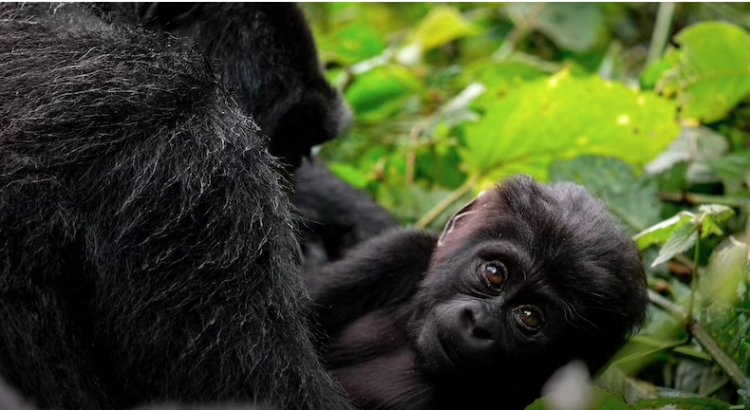
Reader’s Corner: Walking with Gorillas
Guest: Author and Uganda’s first Wildlife veterinarian Dr. Gladys Kalema-Zikusoka joins John to discuss her book ‘Walking with Gorillas’.
published : 7 August 2023
Source : Cape Talk